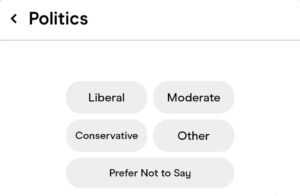The National Public Housing Museum’s board has been granted a deadline extension by the Chicago Housing Authority, allowing those involved more time to gather funds and support for the project.
With a newly formed board of directors and advisory committee, the museum’s board is working on a proposal to present to the Chicago Housing Authority (CHA) in June. The deadline was originally set for December 2007 and has been postponed six months, to allow more time for renovation, funding and sustainability plans.
CHA resident leaders have been working to make the National Public Housing Museum a reality. If the proposal is approved, the CHA will donate the land and building to be used for the museum.
“They’re looking to make sure that we essentially have all our ducks in a row,” said Jennifer Mau, administrative consultant for the museum board. “They’ve made it clear that they want us to present a really strong proposal.”
The suggested home of the museum is a vacant building located at 1322 W. Taylor St. The building was once a part of the Jane Addams Homes, one of the first public housing residences in the city, but has been vacant since 2002.
The future museum will be the first to focus on the history of public housing, as well as the stories of those who experienced it, according to the museum’s Web site. Former public housing residents all over the country have volunteered to document their stories to enhance the museum’s experience.
“No one can tell the story better than me, because I was born and raised here,” said Deverra Beverly, the Local Advisory Council president for the development ABLA Homes, one of the museum’s founding members and a lifelong resident of public housing. “Most of the things that the general public thinks about public housing are not the story.”
A prominent exhibit at the museum will feature recreated apartments decorated in varying styles representing eight decades of public housing, dated from 1938 to 2000. Artifacts and materials gathered from former public housing residents will be incorporated into the spaces to provide an authentic and accurate representation of how families in public housing once lived.
“The experience will be going in to the actual units to see what the space felt like for that period,” said Mau.
The museum will also include temporary exhibits featuring issues relevant to public housing, such as poverty, class and immigration. According to it’s Web site, the museum will act as a neutral space, allowing visitors to interpret exhibits in their own way.
“We’ve gotten input and feedback from people to see what they want in the museum,” said Lisa Lee, a vice president with the Public Housing Museum, who is also the director for the Jane Addams Hull-House Museum, 800 S. Halsted St.
Public forums and community outreach programs have been held to garner interest and support in the museum. Since the last program, a panel discussion about public housing and gentrification in Chicago’s communities held on Feb. 5, was well-attended, the museum is planning on holding more in anticipation of its opening.
“People came to show their support for public housing,” said Lee. “It’s like it’s already open in that way.”
The museum’s board of directors and planning teams will remain busy until their June deadline, continuing to collect stories and support to make the museum a unique learning experience.
“We want this story told,” said Beverly, who has been involved with the museum from day one. “And it couldn’t be a better story because it’s going to be a true story.”
Categories:
Citywide Public
Tags:
cha housing national public housing museum public housing






Be First to Comment